-
Robust fourth-generation nuclear fuel withstands high-temperature accident conditions
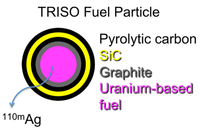
A safer and more efficient nuclear fuel is on the horizon. A team of researchers at the U.S. Department of Energy’s Idaho National Laboratory (INL) and Oak Ridge National Laboratory (ORNL) have reached a new milestone with tristructural-isotropic (TRISO) fuel, showing that this fourth-generation reactor fuel might be even more robust than previously thought.
-
-
Iran indicates willingness to rethink nuclear program in exchange for sanction relief
As part of a series of steps designed to present post-election Iran as more pragmatic, President Hassan Rouhani and his advisers indicated they would be willing to consider curbs on Iran’s nuclear program in exchange for relief from the crippling economic sanctions imposed on Iran. Some Western experts say that all these steps are more than mere cosmetic changes, while skeptics note that Obama has reached out to Iran before, with no results. Veterans of past nuclear negotiations with Iran also noted that it is likely that Rouhani’s team may not yet fully understand the kinds of concessions that the Islamic republic would be required to make to have the most painful economic sanctions lifted.
-
-
Improving nuclear waste repositories

How fast will iodine-129 released from spent nuclear fuel move through a deep, clay-based geological repository? Understanding this process is crucial. Countries worldwide consider underground clay formations for nuclear waste disposal because clay offers low permeability and high radionuclide retention. Even when a repository is not sited in clay, engineered barriers often include a compacted buffer of bentonite, a common type of clay, to improve waste isolation.
-
-
Children living close to nuclear power plants do not have higher risk of developing leukemia
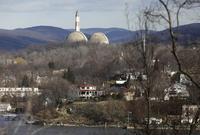
Young children who live near nuclear power plants do not have a greater risk of developing childhood leukemia or non-Hodgkin Lymphoma according to new research. Researchers conducted a study of almost 10,000 children under five years of age who were diagnosed with leukemia or similar cancers in Britain between 1962 and 2007. The scientists measured the distance from the nearest nuclear power plant both at birth and when diagnosed with childhood leukemia or non-Hodgkin lymphoma, and found that there was no apparent extra risk living near a nuclear power plant.
-
-
Fukushima radioactive plume to reach U.S. next year
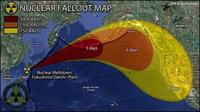
The radioactive ocean plume from the 2011 Fukushima nuclear plant disaster will reach the shores of the United States within three years from the date of the incident, but is likely to be harmless, according to a new study. While atmospheric radiation was detected on the U.S. west coast within days of the incident, the radioactive particles in the ocean plume take considerably longer to travel the same distance.
-
-
Long-term radiation effects: Chernobyl’s lessons for Fukushima
The Fukushima Daiichi nuclear disaster spread significant radioactive contamination over more than 3,500 square miles of the Japanese mainland in the spring of 2011. Now several recently published studies of Chernobyl are bringing a new focus on just how extensive the long-term effects on Japanese wildlife might be.
-
-
U.S. nuclear reactors vulnerable to terrorist attack: study
More than ten years after the 9/11 hijackers considered flying a fully loaded passenger jet into a Manhattan area nuclear reactor, U.S. commercial and research nuclear facilities remain inadequately protected against two credible terrorist threats — the theft of bomb-grade material to make a nuclear weapon, and sabotage attacks intended to cause a reactor meltdown. A new report finds that none of the 104 commercial nuclear power reactors in the United States is adequately protected — but among the most vulnerable are eleven reactors in California, Connecticut, Florida, Maryland, Massachusetts, Missouri, New York, North Carolina, Texas, and Virginia. One of these reactors, on the grounds of the National Institute of Standards and Technology (NIST), is among the three research reactors fueled with bomb-grade uranium, and is located in the Washington, D.C. suburb of Gaithersburg, less than twenty-five miles from the White House.
-
-
U.S. radiation exposure guidelines based on unvalidated assumptions: toxicologist
In the 1950s regulators came to adopt the linear no threshold (LNT) dose-response approach to ionizing radiation exposure, which was later generalized to chemical carcinogen risk assessment. A UMass Amherst toxicologist now offers further evidence to support his earlier assertions that two geneticists deliberately suppressed evidence to prevent the U.S. National Academy of Sciences (NAS) from considering an alternative, threshold model, for which there was experimental support. “This isn’t an academic debate; it’s practical, because all of our rules about chemical and low-level radiation are based on unvalidated assumptions and scientific panel decisions made without sound evidence,” the toxicologist says.
-
-
Detecting radioactive material smuggled in containers
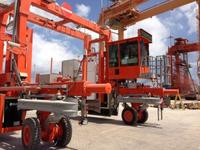
Nearly 90 percent of imported and exported goods travel the globe in shipping containers. Roughly 500 million containers travel the sea each year. A Sandia National Laboratories team completed acceptance testing on an enormous mobile scanner — the Mobile Radiation Detection and Identification System (MRDIS) — which makes smuggling radiological materials in containers more difficult.
-
-
U.S. nuclear facilities vulnerable to terrorist attack: study
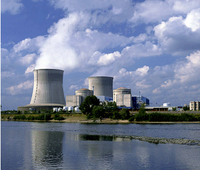
Some U.S. nuclear facilities are inadequately protected against theft of weapons-grade materials and sabotage by terrorists. Terrorist attacks on vulnerable nuclear facilities could trigger a meltdown or lead to a diversion of bomb-grade uranium. The danger is far from hypothetical since the 9/11 hijackers are known to have considered flying a passenger jet into a U.S. nuclear reactor before they settled on the World Trade Center as their main terror target.
-
-
Small modular reactors (SMEs) a “poor bet” to revive U.S. nuclear renaissance: report
A shift to small modular reactors (SMRs) is unlikely to breathe new life into the troubled U.S. nuclear power industry, since SMRs will likely require tens of billions of dollars in federal subsidies or government purchase orders, create new reliability vulnerabilities, as well as concerns in relation to both safety and proliferation, according a report issued last week.
-
-
U.S. military trains to support civil authorities during domestic CBRN incident
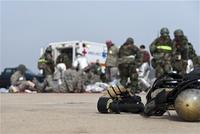
Vibrant Response 13-2 exercise, conducted by U.S. Northern Command and led by U.S. Army North (Fifth Army), is an annual event and is the country’s largest CBRN exercise. The training exercise is used to evaluate a military unit’s operational and tactical ability to support civil authorities during domestic incidents involving chemical, biological, radiological, or nuclear weapons.
-
-
Nuclear academics, professionals meet for 6th annual ATR NSUF Users Week
The sixth annual Advanced Test Reactor National Scientific User Facility (ATR NSUF) Users Week was held 10-14 June at University Place, the satellite campus for Idaho State University and University of Idaho in Idaho Falls. This nuclear research-themed week was the user facility’s opportunity to update the user community on nuclear energy issues and tools, conduct a research forum where users can come and present their research, run specialized workshops, and build collaboration among academic, industry and government institutions.
-
-
Japan to restart nuclear power plants
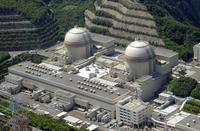
Japan’s fifty nuclear power plants were taken off-line in the wake of the 2011 Fukushima nuclear disaster, but the government Prime Minister Shinzo Abe, which took office in December, said it was planning to restart Japan’s nuclear power generation program.
-
-
Highly portable X-ray imaging system developed
Los Alamos National Laboratory and Tribogenics have developed the MiniMAX (Miniature, Mobile, Agile, X-ray) camera to provide real-time inspection of sealed containers and facilities.MiniMAX is an alternative to the large, expensive, and fixed facilities presently required for security inspections using X-ray imaging. The complete MiniMAX portable radiography system weighs less than five pounds.
-
- All
- Regional
- Water
- Biometrics
- Borders/Immig
- Business
- Cybersecurity
- Detection
- Disasters
- Government
- Infrastructure
- International
- Public health
- Public Safety
- Communication interoperabillity
- Emergency services
- Emergency medical services
- Fire
- First response
- IEDs
- Law Enforcement
- Law Enforcement Technology
- Military technology
- Nonlethal weapons
- Nuclear weapons
- Personal protection equipment
- Police
- Notification /alert systems
- Situational awareness
- Weapons systems
- Sci-Tech
- Sector Reports
- Surveillance
- Transportation
Advertising & Marketing: advertise@newswirepubs.com
Editorial: editor@newswirepubs.com
General: info@newswirepubs.com
2010-2011 © News Wire Publications, LLC News Wire Publications, LLC
220 Old Country Road | Suite 200 | Mineola | New York | 11501
Permissions and Policies
Editorial: editor@newswirepubs.com
General: info@newswirepubs.com
2010-2011 © News Wire Publications, LLC News Wire Publications, LLC
220 Old Country Road | Suite 200 | Mineola | New York | 11501
Permissions and Policies
